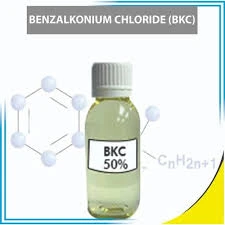Application of Poly Aluminium Chloride in Effective Wastewater Treatment Solutions
The Role of Poly Aluminium Chloride in Wastewater Treatment
Wastewater treatment is an essential process that aims to remove contaminants from sewage and industrial wastewater before it is released back into the environment or reused for various purposes. Among the various coagulants used in the treatment of wastewater, Poly Aluminium Chloride (PAC) has gained significant attention due to its efficiency and effectiveness in various water treatment applications.
What is Poly Aluminium Chloride?
Poly Aluminium Chloride is a chemical compound that falls under the category of inorganic coagulants. It is a polymeric form of aluminium chloride that is produced through the hydrolysis of aluminium salts in an alkaline solution. PAC is characterized by its high molecular weight, and its structure allows it to form larger aggregates when it interacts with impurities in water. Being a versatile chemical, PAC is used in both drinking water purification and wastewater treatment processes.
Mechanism of Action
The effectiveness of PAC in wastewater treatment can be attributed to its unique coagulation and flocculation properties. When PAC is added to contaminated water, it dissociates to release aluminium ions. These ions interact with the negatively charged particles and colloids present in wastewater, neutralizing their charges and causing them to aggregate into larger particles or flocs. This process, known as flocculation, enhances the sedimentation of these larger particles during the subsequent treatment steps.
PAC has a higher efficiency compared to traditional coagulants like alum (aluminium sulfate) due to its ability to work across a wider pH range and at lower doses. This not only leads to improved removal rates of suspended solids and phosphates but also reduces the generation of sludge, a byproduct of coagulation processes.
Benefits of Using PAC
1. Improved Water Quality The primary objective of wastewater treatment is to produce water that is safe for discharge or further processing. PAC is effective in reducing turbidity, organic matter, and total suspended solids, leading to significantly improved water quality. This is especially important as stricter regulations for wastewater discharge are being implemented globally.
poly aluminium chloride in wastewater treatment

2. Lower Sludge Production One of the major challenges in wastewater treatment is the disposal of sludge. PAC requires less dosage than conventional coagulants, resulting in lower volumes of sludge generation. This not only reduces disposal costs but also minimizes the environmental impacts associated with sludge handling.
3. Versatility PAC is effective in treating a wide range of wastewater types, including municipal sewage, industrial effluent, and even surface water. Its adaptability makes it a popular choice across various industries, including food and beverage, mining, and textile manufacturing.
4. Cost-Effectiveness Although the initial cost of PAC can be higher than traditional coagulants, its efficiency can lead to overall cost savings in treatment processes. The reduced dosage requirements and lower sludge disposal expenses contribute to long-term savings for wastewater treatment plants.
5. Environmental Safety PAC is known for its relatively low toxicity compared to other chemical coagulants. Its use poses minimal risks to aquatic ecosystems when wastewater is treated properly before discharge.
Challenges and Considerations
Despite its benefits, the use of PAC in wastewater treatment is not without challenges. One of the main concerns is the careful monitoring of residual aluminium levels in treated water, as excessive aluminium can have adverse effects on aquatic life. Additionally, the need for precise dosing and optimal pH adjustments can complicate the treatment process.
Operators must ensure that they are following the recommended guidelines for PAC usage to achieve the desired coagulation efficiency while minimizing potential environmental impacts. This includes regular testing of effluent quality and adjustments based on the specific characteristics of the wastewater being treated.
Conclusion
Poly Aluminium Chloride has emerged as a vital player in the field of wastewater treatment, offering a range of advantages over traditional coagulants. Its effectiveness in improving water quality, minimizing sludge production, and adaptability to various types of wastewater underscores its importance in modern treatment facilities. As environmental regulations continue to tighten and the demand for clean water increases, PAC is poised to play a critical role in sustainable wastewater management practices. By harnessing the benefits of PAC, industries and municipalities can work towards achieving cleaner, safer water for both people and the planet.
-
Water Treatment with Flocculant Water TreatmentNewsJun.12,2025
-
Polymaleic AnhydrideNewsJun.12,2025
-
Polyaspartic AcidNewsJun.12,2025
-
Enhance Industrial Processes with IsothiazolinonesNewsJun.12,2025
-
Enhance Industrial Processes with PBTCA SolutionsNewsJun.12,2025
-
Dodecyldimethylbenzylammonium Chloride SolutionsNewsJun.12,2025





